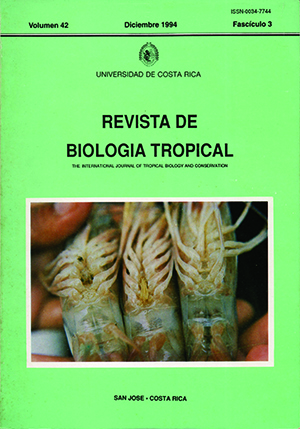Abstract
Collections of all sizes of the snail Plicopurpura patula pansa in two rocky beaches of Bahía Cuastecomate, Jalisco (19"14'00" N, 104'45'50" W) and the manual extraction of its dye during May, August and November (1987) and April (1989) indicated tbat tbere was a proportional relationship between the size of the snail and the amount of dye produced. Females produced more dye than males of tbe same size. This differenee may be related to the way in which the females use the dye, particularly to protect the egg capsules laid among rocks in the beaches. A number of snails were tagged and confined in cages placed in intertidal pools to study recovering time of dye to original levels. Recovering time was shorter in larger snails. Individuals larger than 5 cm recovered in 7 days; smaller individuals, after 1 S-2l days. These results help to establish better criteria for the exploitation of P. p. pansa in Jalisco.##plugins.facebook.comentarios##

This work is licensed under a Creative Commons Attribution 4.0 International License.
Copyright (c) 1994 Revista de Biología Tropical
Downloads
Download data is not yet available.


